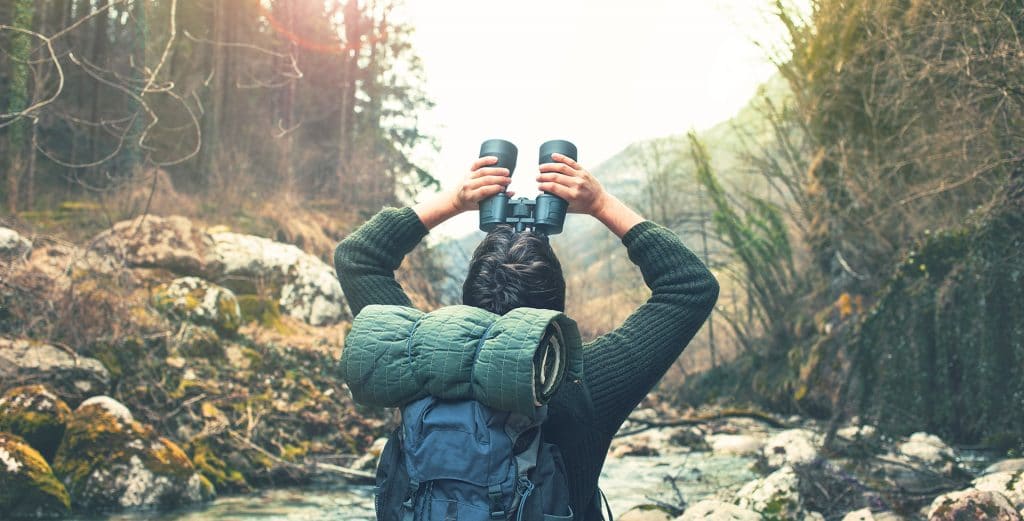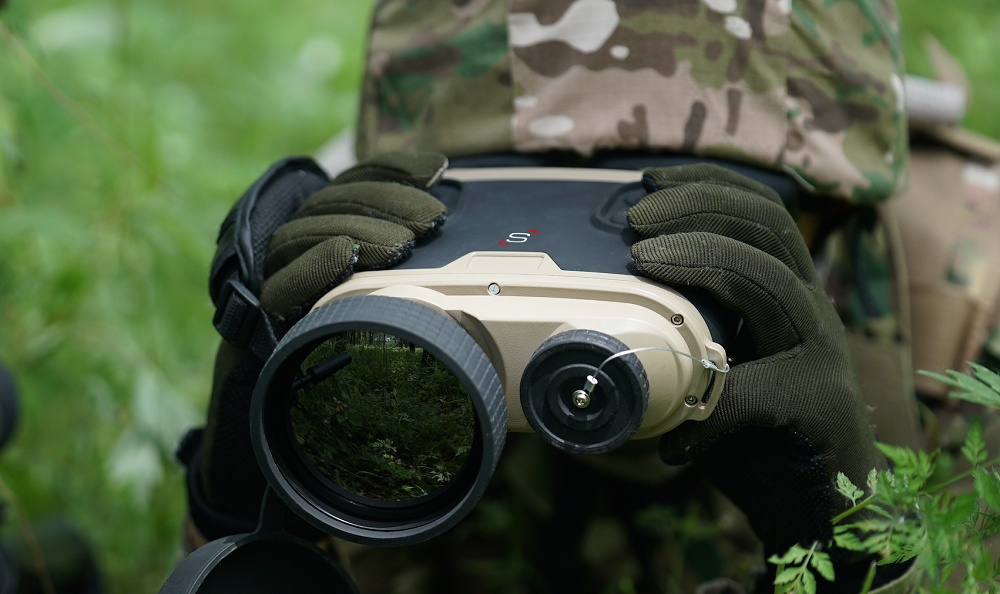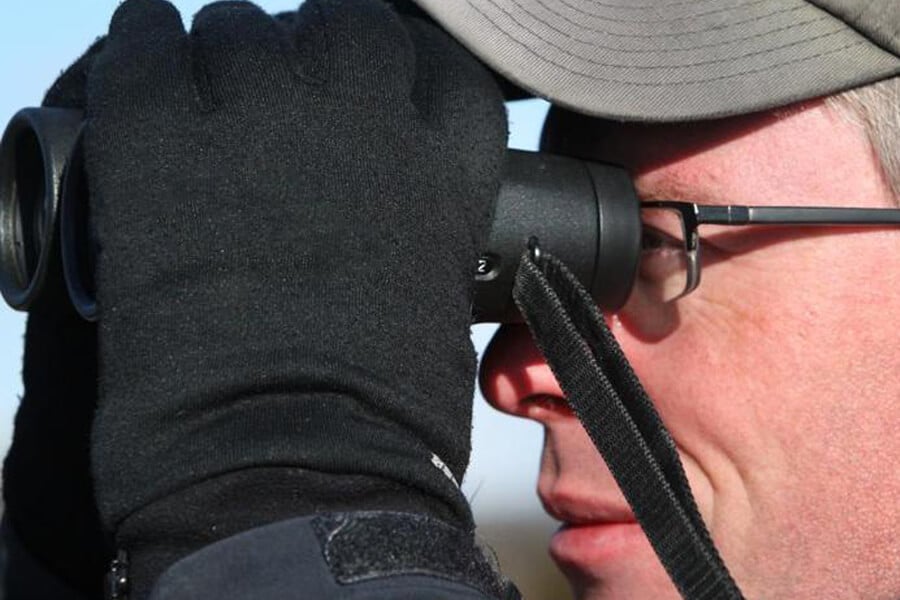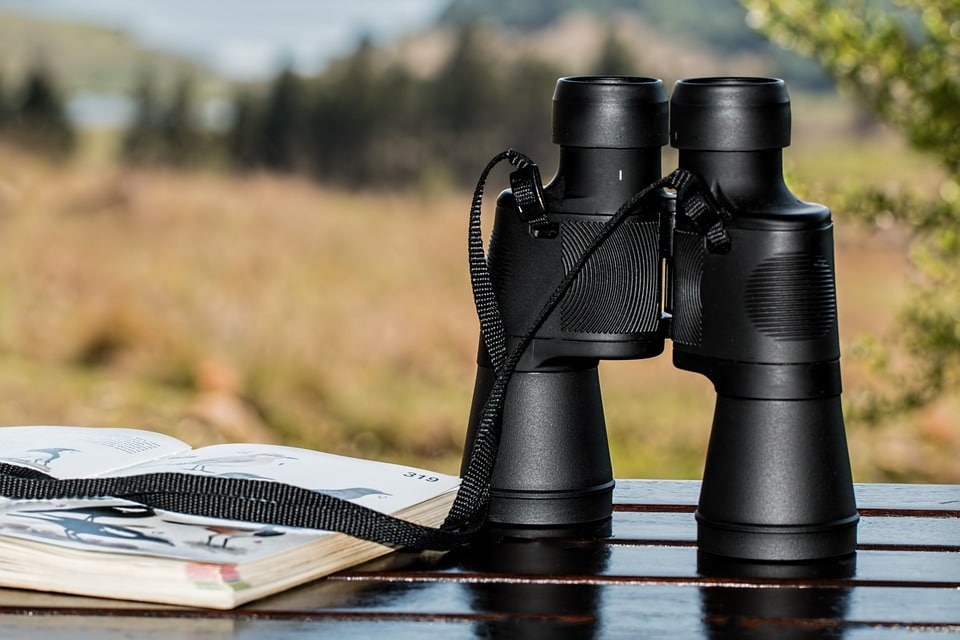

Every outdoorsy person who is passionate about wildlife knows the immense feeling that comes with observing nature and its beauties. There is endless beauty in wildlife as it is where nature is in full existence. There is a wide variety of animals you can see in the wild, whether feathered, scaled, or fluttery. For an enhanced wildlife viewing experience, you need to bring the faraway closer without moving a muscle. This is only possible if you get the best binoculars for wildlife viewing.
The market is flooded with various models and brands of binoculars that choosing the best would be a piece of work. Plus, there is more to buying binoculars than just walking into a store and picking the first you lay your eyes on. We came up with this guide to help you make the best buy easily. We considered over 20 products and ended up with a refined list of the 5 top-rated binoculars in the market. The Vortex Optics Viper HD was our best overall pick as it is reasonably priced, has superior features, and first-rate performance compared to the other products.
You can trust our products to be the best in the market owing to the reliable sources and adequate time we spent on research. Some of the features on which we based our ranking and choices include; objective lens diameter, weight, magnification, eye relief, and field of view, among others. On the comparison table, detailed product reviews, and a comprehensive buying guide, you will find all the ideal information you need to know to choose the best binoculars in the market.
Other features: roof prisms, multi-layer prism coatings, waterproof and fog-proof
The Viper HD is a popular model among binoculars lovers owing to its high-end optics and reasonable price. The Japan-made binoculars offer spectacular performance and user utility at an excellent value for their price.
The binoculars come in a single bridge body design, which makes it extraordinarily comfortable and well-balanced. It is super lightweight and compact but rugged in its build. You will have an easy time in the wilderness as the slick design allows you to move the binoculars easily without slipping, especially when bird watching.
The Viper HD also features a slick focus wheel that is centrally located and nicely set to offer you a perfect grip in all weather conditions.
Also featured is a lockable diopter ring, which allows you to lock in your preset optics. You will find this useful when you go bird watching.
Another plus for this binocular is that it is fully O-ring sealed, thus waterproof. Additionally, it is fog-proof, so you can view wildlife at dawn or late evenings. What sets it apart is that it uses Argon gas, unlike most binoculars that use Nitrogen gas. It is, therefore, more resistant to diffusion.
What’s more, this binocular has a screw thread that can fit in several tripods, so, in case you want to mount it on a tripod, you will not be limited to a single model.
With a powerful magnification of 8x and an objective lens diameter of 42mm to let in a generous amount of light, you will have the clearest and brightest view. The wide 347ft field of view will allow you to see faraway objects clearly. Whether you are bespectacled with eye problems or not, you will benefit from the whopping 20mm eye relief.
In conclusion, this is one of the best fog-proof binoculars for wildlife viewing you can get at such a reasonable price. Its high-end features and top-notch performance set it apart.
Other features: Schmidt-Pechan prism, HD lens, LotuTec® coating, waterproof
Are you looking for a premium upgrade or just premium quality binos for a start? Well, here is your best bet. Being a German brand, its quality is unquestionable. Its powerful and convenient features will give you an exhilarating wildlife viewing experience. You just have to be ready to part with its premium price.
The binoculars come in a lightweight and laid back design. Its lightweight body will allow you to stalk game for long periods comfortably without fatigue. This is made even better with the long eye relief of 16mm, which favors both glass and non-glass wearers.
Additionally, the rotating and lockable eyecups make it so easy for you to adjust the eyepiece to the right focus, whether you are bespectacled or not.
With a powerful magnification of 8x and a highly effective lens with 32mm diameter, this binocular is in its own class when it comes to clear and bright viewing. The multi-coated lenses also contribute to the exceptional clarity and brightness by offering 90% light transmission. Because of this, the ZEISS Conquest HD is one of the best binoculars for night time wildlife viewing as it works fantastically even in low conditions.
Moreover, with its wide field of view of 377ft, you will be able to capture fast-moving objects like birds with so much ease.
As expected of any binoculars in its class, this bino is fully weatherproof, which not only makes it more convenient but also highly durable.
With a 5-year no-fault policy and a lifetime warranty, this is the most premium pair of binoculars you can invest in for the best wildlife viewing experiences.
Other features: lifetime warranty, waterproof, multi-coated lenses, phase corrected coating, lightweight magnesium chassis
Athlon has recently taken the Binoculars market by storm with its high-quality build and first-rate performance. If you are looking for a highly durable binocular with high-end optics and can withstand the hostile wilderness environment, this is your best bet. Plus, you don’t have to break the bank to own it.
The bino comes in a slick, lightweight design. It is sturdily built with the incredibly lightweight but durable magnesium chassis. It reduces the weight by 35% compared to other binoculars.
The Binos’ exterior lens has an extra protective layer that prevents it from dust, dirt, or oil.
When it comes to image quality, this Athlon binocular is on another level. On top of its powerful magnification of 8x and a highly effective objective lens with a wide diameter of 42mm, it features an enhanced spectrum coating. The multilayer prism coating covers a large portion of the picture allowing in all the light for a distinct and sharp image.
Additionally, its phase-corrected prisms offer great contrast and clearer images. The fully multi-coated lenses also contribute to the correct brightness and color by allowing light to transmit better.
Whether you wear glasses or not, you will be able to see the widest field of view for long periods thanks to the long eye relief of 17mm. Plus, you will be able to set the eye relief as you need with the twist-up eyecups it comes with.
Moreover, the binocular has Argon purging, which gives it thermal stability and better waterproofing. It also features a locking diopter, which saves your eyepiece settings so that you don’t have to keep setting up.
Overall, this binocular is a gem of a product with its rugged build and multiple convenient features. With all the power and utility it offers, it is a huge bargain for the money.
Other features: ED glass, flat field lens technology, fully multi-coated lens, phase coated, waterproof and fog-proof
This is an ideal pick for nature lovers, especially birdwatchers. It is a genius combination of durability and convenience. It packs a lot of power with high-end optics that will give you the best wildlife viewing experience.
The binos are incredibly lightweight, perhaps the best lightweight binoculars for wildlife with long eye relief on this list and out there. It is, therefore, super comfortable and easy to use for both glass and non-glass wearers.
It has a sturdy build that absorbs shocks and guarantees durability.
With this binocular, you will get crystal clear views thanks to its extra-wide field of view of 420ft a 1000 yards, close focus, ED glass, and phase correction coated prism. The fully multi-coated lens ensures maximum light transmission for creating bright, clear, and sharp images.
The ED glass prevents any color fringing by reducing chromatic aberration while the phase –correction coated prisms and 42mm objective lens make colors pop naturally.
Moreover, this binocular is Nitrogen purged to make it weatherproof. It is waterproof and fog-proof and can, therefore, withstand harsh weather and environmental conditions.
The binos are also tripod adaptable; in case you want to mount it, you wouldn’t be limited to a certain type of tripod.
All considered, this is one of the best compact binoculars for wildlife viewing with multiple powerful features in its small and lightweight body. It is also conveniently priced.
Other features: BaK 4 prisms, multi coated optics, waterproof and fog-proof, non-slip rubber armor, limited lifetime warranty
If you are on the market for the biggest value for each penny you spend, this should be your prime pick. It is one of the most popular binos in the market because it is incredibly affordable but offers top-notch features found in most high-end products.
This Bushnell binocular isn’t the best lightweight binoculars for wildlife viewing in the market, but it sure is built tough to withstand all the harsh conditions in the wilderness. With a housing made of magnesium, it is highly durable and lightweight enough to carry around at the same time.
The binocular is pretty easy to use, especially with its long eye relief of 17mm that makes long-term viewing super comfortable for both glass and non-glass wearers.
With this binocular, you will experience nothing less than optimum brightness and true color thanks to its ultra-wide coatings. The ED prime extra-low dispersion fluorite glass also ensures you get the best contrast and color resolution for your images.
Like most Binos, this Bushnell model is Nitrogen purged to make it fully weatherproof. It is internally fog-proof. Additionally, it features a water-repellent coating on the exterior lens surfaces making it highly resistant to water, snow, and condensation. Because of this, it is one of the best binoculars for whale watching and wildlife viewing in the market.
With a lifetime warranty backing up all the fantastic features this binocular offers, it is a gem of a product totally worth the buy.
Choosing a binocular is pretty personal, but there is a lot to consider for you to make the right choice. This section contains all the information you need to know about finding the right compromise between performance, features, and price on a binocular to suit your needs and budget. You will know what to expect from binoculars for wildlife viewing and features to consider when choosing one.
Binoculars for wildlife viewing have some common characteristics including:
Most binos for wildlife viewing have a magnification of 8x or 10x. Though you can find models with lower or higher magnification.
Since you are expected to be out in the wilderness exposed to harsh weather and environmental elements, most binoculars for wildlife viewing are built to be fully weatherproof. They are Argon or nitrogen purged to be fog-proof and build sturdily with a water-resistant exterior.
There are compact, mid-size, and full-size binoculars for wildlife viewing depending on the diameter size of the objective lens.
Most binoculars for wildlife viewing have eye relief for the comfort of glass wearers. It helps prevent eye fatigue.
Since you will be viewing a variety of dangerous beings in the wilderness, the binoculars are built to offer the best image quality with great optics. The optics include lens materials and coatings, prisms, and ED glass.
There are certain features that you have to look out for when buying binoculars for wildlife viewing. They determine the quality and efficiency of the binos.
This determines the size of the binoculars. For convenience and portability, you better go for a lightweight and compact model. Binos with greater dimensions are likely to have an ultra-wide objective lens, which is good for high-quality images. You should choose a size and weight that suits your needs, and you can always mount the bino on a tripod if you find it too heavy.
With wildlife viewing binos, you will mostly have a choice of 8x or 10x magnification, though some models have a lower or higher magnification.
With the 8x magnification power, you will have a wider field of view and clear enough images, while with a 10x magnification, you will have a lesser field of view but a closer and more detailed look.
This determines the amount of light your binoculars can gather. Binos with a larger objective lens diameter will gather more light, thus, providing a better, clearer, and brighter image.
A wider field of view lets in a lot of light that makes images brighter. It also makes it easier to locate small and moving objects like birds. Be sure to go for a bino with a wider field of view like the Wingspan Optics Thunderbird Ultra HD reviewed above.
This is a critical aspect to consider if you wear specs. It is the distance between your eye and an eyepiece when the whole field of view is visible. Be sure to go for Binos with a long eye relief more than 11mm like the Athlon Optics Midas reviewed in detail above.
Binoculars with multi-coated lenses and prisms guarantee you of crystal clear images with true color and brightness. They are the one that direct light from the image through the binoculars to your eyes.
The higher the number of the exit pupil, the brighter the images.
Choose binoculars with a rugged housing that can withstand the harshness of the wilderness. Ensure it has a rubber coating for absorbing shocks. It should be lightweight but durable as well as water-resistance. Housing made with magnesium material is highly suitable because of its lightness and durability.
Go for binoculars that have been nitrogen or argon purged to be fog-proof and water-resistant. This will allow you to view in extreme weather conditions that expose it to water, snow, or condensation.
This allows you to mount the binoculars on several types of tripods whenever you need to.
The longer the warranty, the better. In case you encounter any trouble using the binoculars, you can always get help from the manufacturer.
Your safari travel of wildlife viewing moments will be more enjoyable with the best binoculars for wildlife viewing. With any of the binoculars reviewed above, you can bring nature closer to your feet without moving a muscle. On top of the detailed product reviews, the comprehensive buying guide will help you choose the right binocular without a hassle.
Of all the products we reviewed, the Vortex Optics Viper HD emerged the best overall pick. It offered high optics, powerful performance, and multiple convenient features at a reasonable price that could not be compared with the other products. The ZEISS Conquest HD and the Athlon Optics Midas followed in ratings and ranking. They both offer premium quality in their build and performance. Their high-end optics and multiple superior features set them apart, and as much as they are a bit pricey, they offer great value for their prices.
That’s it! That is all you need to know before you go shopping for the best binoculars for wildlife viewing. With all the ideal information on this guide, you will never regret your choice.





